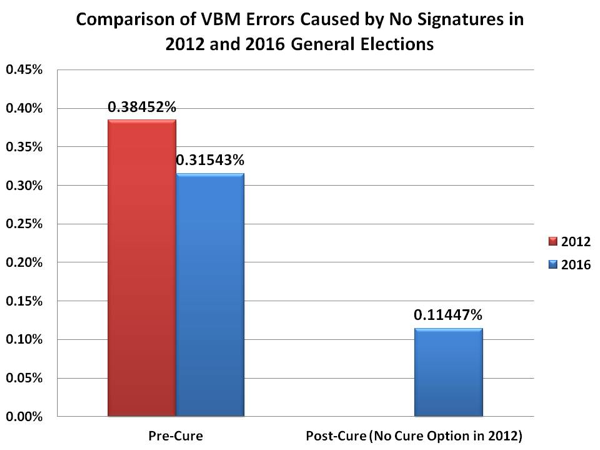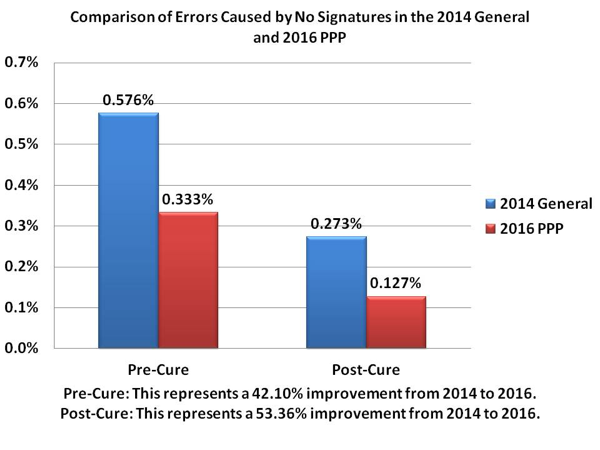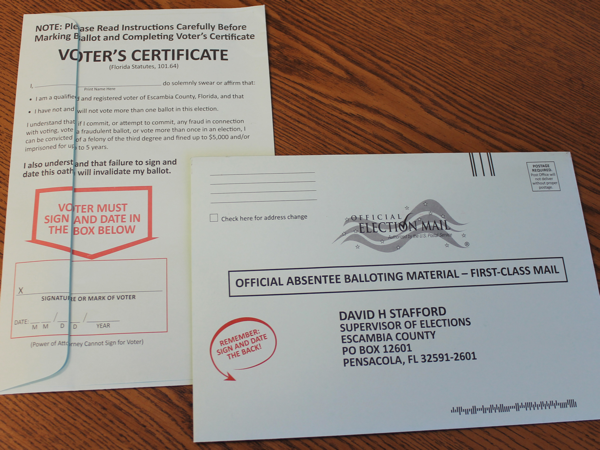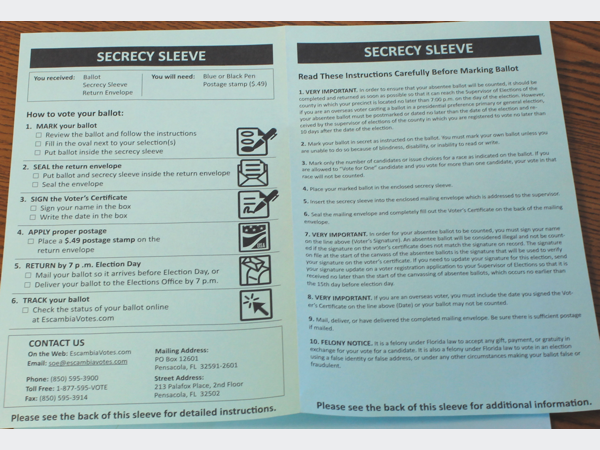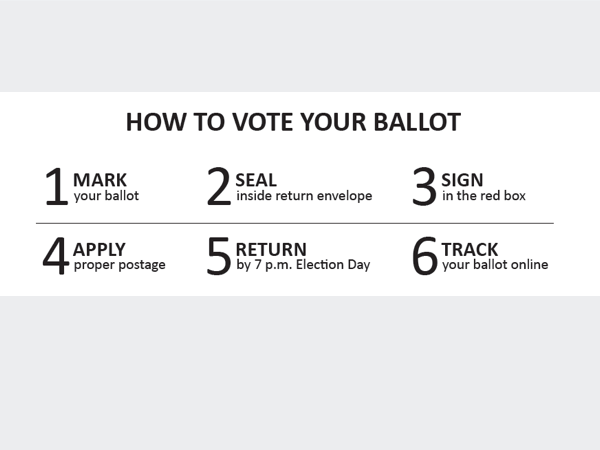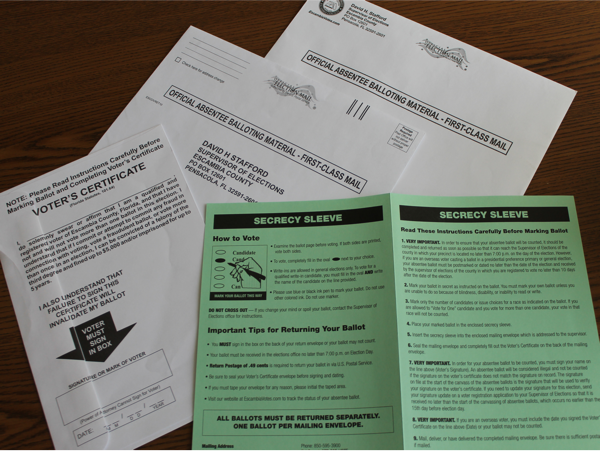Counting more absentee ballots in Escambia County, Florida
Can updating the instructions and forms for returning absentee ballots make a difference to how many of those ballots actually count?
It did in Escambia County.
It all started when a change in the election law provided an opportunity to review and update the entire design. Of course, much of the language is dictated by statute, and there are technical requirements for managing addresses and other information that is printed on the envelope for each voter.
But there is always room for improvement.
When Supervisor of Elections David Stafford showed us his latest designs, we were impressed. There were little details like:
- New instructions as a checklist on the outside of the envelope.
- Redesigned instructions, with steps that match the checklist, and simple illustrations.
- Good line spacing, larger text, and bullets to make the voter’s oath easier to read.
- A little color to highlight the signature area.
But we didn’t learn the best thing about the new design until after the Florida Presidential Primary.
One of the most common reasons an absentee ballot is rejected is because a signature is missing (or doesn’t match the one on file). The new law allowed a voter to “cure” the problem by completing an affidavit with their signature. Stafford and his staff did a careful analysis to see whether the new envelope design had an effect.
And it did.
From 2012 to 2016 Presidential elections
Looking at the combination of the new envelope design and the new law shows how big the impact can be when positive changes in the election law are combined with good design.
2016 was the first presidential election under the new law, so changes in the number of missing signatures can be attributed to the design, but the big improvement comes from the option for voters to “cure” a missing signature. Comparing the 2012 and 2016 presidential elections:
- 18% drop in ballots missing a signature
from 0.385% in 2012 to 0.315% in 2016 - 70% overall drop in rejected ballots, after “curing” a missing signature
down to 0.114% in 2016
From 2014 to the 2016 primary
The 2014 General Election was the first election to be held after the new law was passed. The new envelope design was introduced for the 2016 Presidential Primary. Because both of these elections came after the new law, any improvements are likely the result of the new designs. After the new designs were introduced:
- 42% drop in ballots missing a signature
from 0.576% with the old materials to 0.333% with the new design - 53% overall drop in rejected ballots after voters were offered the chance to supply a signature
from 0.273% with the old materials to 0.127% with the new design
Overall, there was a 36% decrease of the total number of absentee ballots rejected for any reason from 0.696% in 2014 to 0.446% in the 2016 primary.
And that’s worth cheering.
Read about this work in:
Designing a Better Ballot: Even small tweaks can have a significant effect on an election by Adrienne LaFrance. The Atlantic, October 5, 2016


